Thalictrum pubescens
The tallest and most stout of all meadowrues
Thalictrum pubescens tall meadowrue
Add to MyPlants View Locations
Tall meadow-rue is a herbaceous perennial native to North America, thriving in moist environments like marshes, swamps, and wet meadows. It can grow impressively tall, reaching heights of 3 to 9 feet, the tallest of all our meadowrues. The flowering period is from late June to August and begins around the time its relative early meadowrue goes to seed.
Starry apetalous white flowers (each to ⅓″ across) bloom in fluffy many-flowered inflorescences (panicles or racemes). Plants are mostly dioecious (male and female flowers on separate plants), except male and female flowers sometimes appear on the same plant and bi-sexual flowers sometimes appear with limited numbers of stamens. Majority of plants have male flowers. White flower color primarily comes from the showy thread-like white stamens (or rather filaments of the stames) which extend outward in a starburst pattern. Plants with female flowers are less showy, but also have white star-like pattern created by the stigmas.
Tall meadowrue is primarily pollinated by wind and occasionally by small bees and flies. The seeds, housed in its achene fruits, may be dispersed by animals or water, aiding in its propagation. Deer typically avoid eating this plant, as it is somewhat deer-resistant. However, if food is scarce, deer may nibble on plants they usually wouldn't touch.
Habitat & Range
Common in rich woods, stream banks,wet meadows and swamps.
Present throughout the state.
| EMP: | FAC |
|---|---|
| NCNE: | FACU |
Phenology
Flowers June through August.
Characteristics
Inflorescence racemose to paniculate, somewhat rounded
Flowers usually unisexual or can be female flowers with a few stamens; apetalous; sepals white to purplish, elliptic-rounded, 2-3.5 mm long;
Staminate Flowers filaments white to purplish, club-shaped, up to 7mm long; anthers creamy white; abt 1.5 mm long
Pistillate Flowers stigmas often coiled distally; persistent; up to 2.5 mm long & ½ length of achene body
Leaves ternately or pinnately decompound; 15-27 leaflets; basal and lower cauline leaves petiolate, upper cauline leaves sessile
Leaflet ovate to rounded, blue-green; 0.2 - 2.2″ wide; tip(apice) entire to 2 to 3 or 5-lobed; green, glabrous above and light green, minutely pubescent underneath
Stem stout, erect, pubescent
Fruit ellipsoid, ribbed achenes; often in clusters; 3-5mm long
Height 3 to 9 feet
Plant Codes
S-rank: S5 (Secure)
G-rank: G5 (Secure)
Ecology
Flowers are primarily pollinated by wind but do also attract pollinators such as bees and flies, although they play a less significat role in the reproduction process.
Certain beetles reportedly feed on the plant, as do caterpillars of some moths, such as Straight-lined Looper.
Some herbivores such as deer and rabbits may feed on the leaves, especially when food sources are scarce.
Thalictrum pubescens tall meadowrue
Synonyms: Thalictrum polygamumAdd to MyPlants View Locations
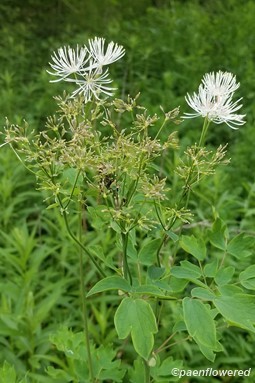
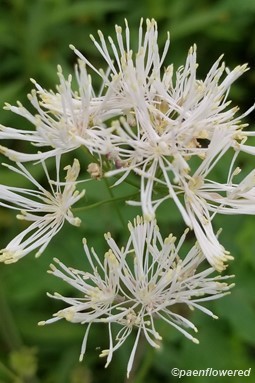
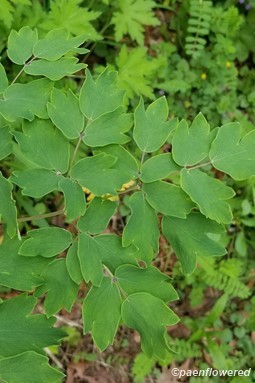
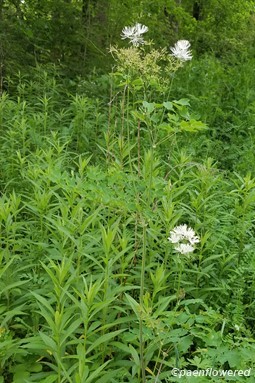
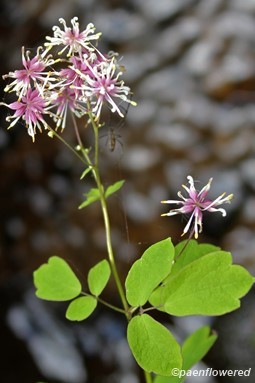
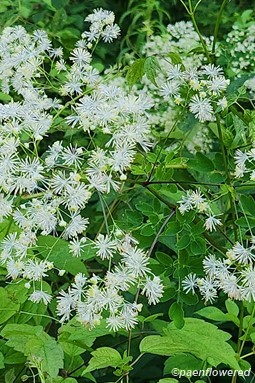
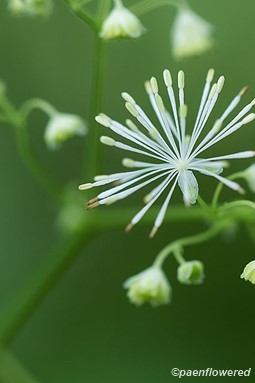
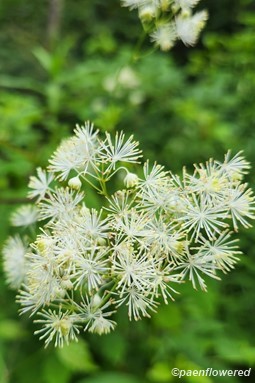
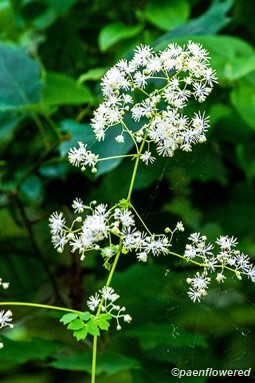
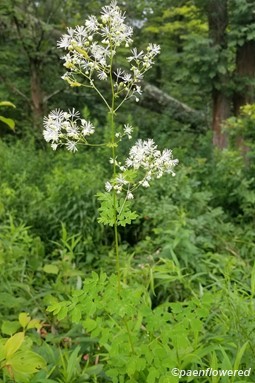
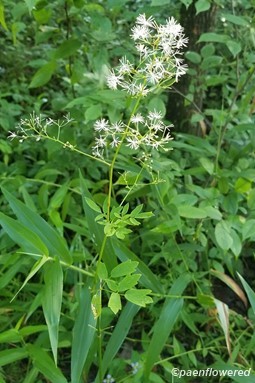
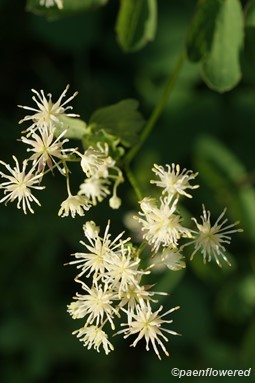



Comments
Have you spotted this plant in your area? We'd love to hear about your experience! Share your comments or questions about the plant below. Comments are moderated before posting.